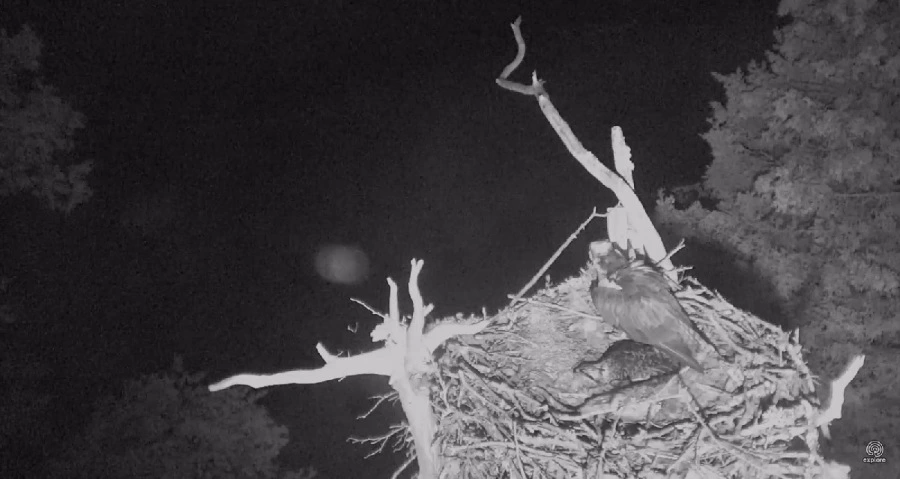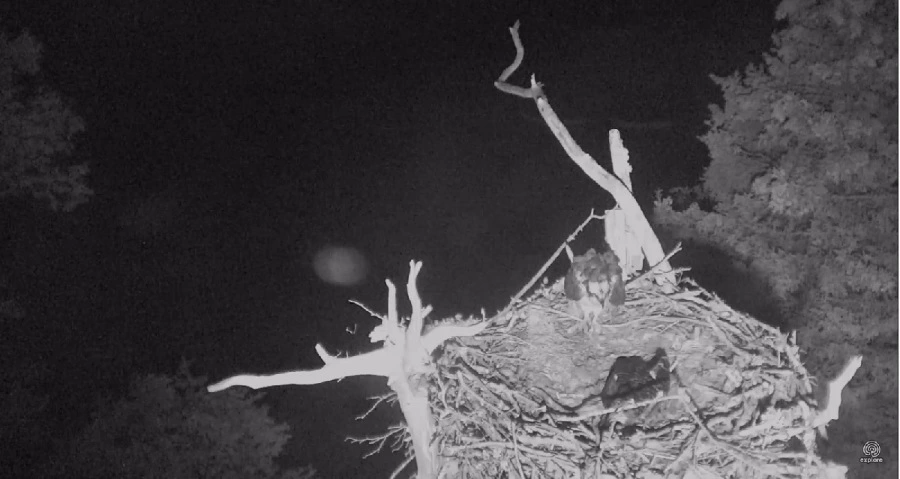Šodien ar GT palīdzību vairāk palasīju šīs tiešraides čatu, kurā var izlasīt daudz interesantas lietas un zinošu cilvēku viedokļus par šīs nakts notikumiem un zivjērgļu mātītes nestandarto uzvedību šādā draudu situācijā, kas līdz šim neesot pieredzēta, ka zivjērglis ar pretuzbrukumu
stājas pretī ūpim. Kā moderators izteicās, ka šī kamera pārrraksta ornitoloģijas vēsturi. Ligzdas mātīti sauc Rachel un tēviņu Steve. Latviskojot, gribētos rakstīt - Reičela un Stīvs. Mazulim ir vārds Baley. Esot meitene. Informācija par šo ērgļu ģimenes ligzdošanas veiksmēm un neveiksmēm ir 5 gadus.
 http://explore.org/live-cams/player/osprey-nest
http://explore.org/live-cams/player/osprey-nest
Komentārs no čata.
Moderators
Poppy raksta - ar tulkotāju galveno var saprast. Reičela ir guvusi pieredzi, zaudējot 2 bērnus, un maina savu uzvedību, lai aizstāvētu savu vienīgo cāli.
Baidos pareizi noformulēt
Steve Kress amatu, bet saprotu, ka daudz saprot par putniem.
 This was just posted by Nationl Audubon Society, including words from Steve Kress:
This was just posted by Nationl Audubon Society, including words from Steve Kress:
We once again asked Steve Kress, who works on Hog Island and is
Audubon's vice president of conservation and director of seabird
restoration program, for his thoughts on this latest news. Here's what
he wrote back in an email:
"There is a lot of insight about how
individual predators learn new and ingenious ways to capture prey. What
is surprising here is that Rachel seems to be learning new ways to
defend her remaining chick. Predator-prey interfaces are often thought
to be driven by selection favoring specific behaviors that then become
genetically hard-wired, but if Rachel is changing her behavior by
perching lower and closer to her chick, it appears she is learning from
her experience and adapting her behavior to be a more successful parent.
The camera is once again showing new and very exciting insight to bird
behavior."







